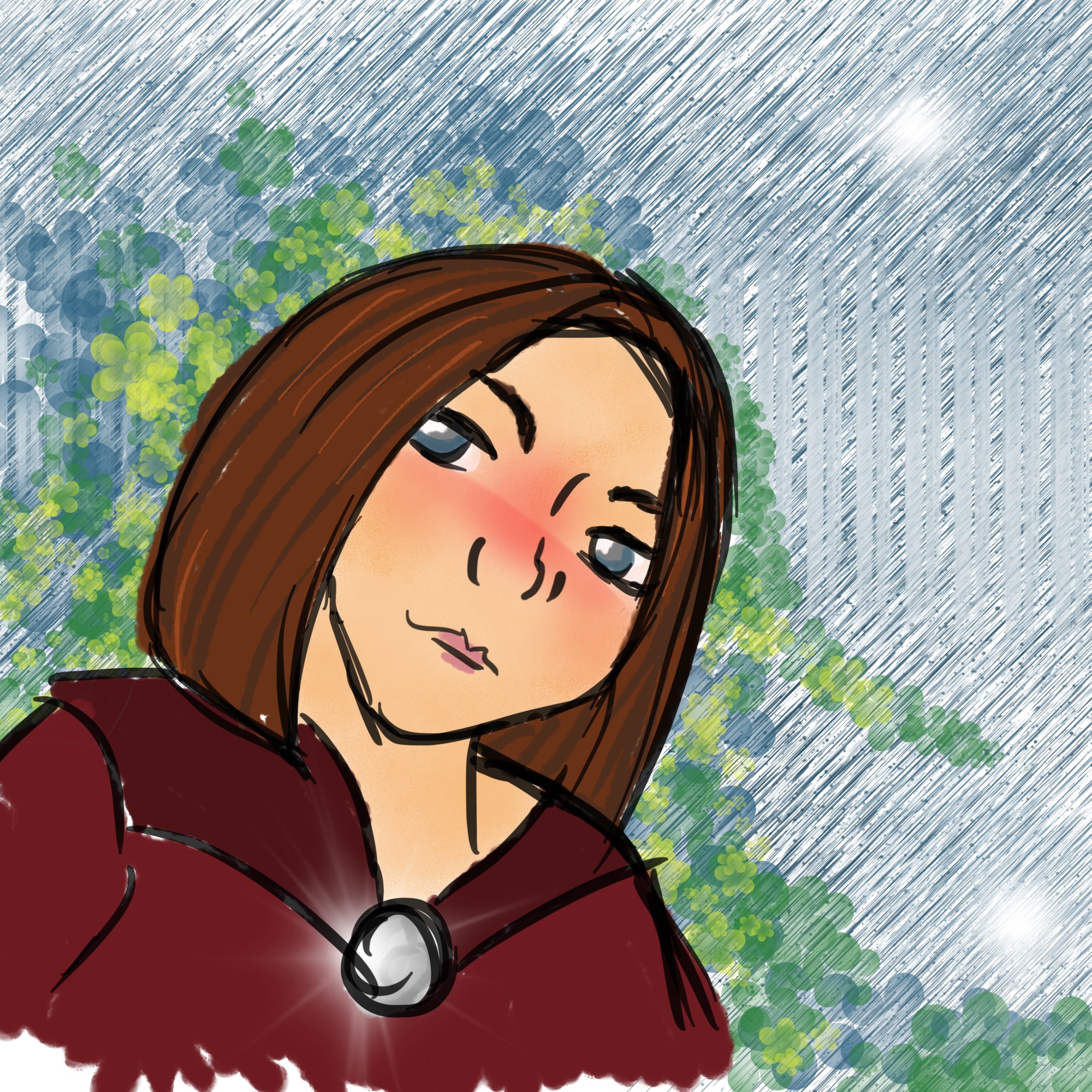Kids love to draw. On paper, walls, furniture, the pavement, in schoolbooks and any other surface that stands still long enough.
I have some of my first doodles in a scrapbook that my mother put together for me some years ago. It is one of my most priced possession, because there is a fearlessness in children’s drawings.
The audacity to call a circle, some lines, and a blob of purple a lion is a level of confidence many of us outgrew well before our teenage years set in properly. I can only speak for myself, but I cannot imagine I was the only self-conscious teen who stopped drawing, because I deemed my drawings “bad” and “inadequate”.
Through my 20’s I dabbled in creative outlets here and there. Art-therapy was on the table for a while, but quickly I decided that it was better if I wrote stories, rather than trying to draw. I stuck with this outlook for a decade. I have written a lot, some of it is cringeworthy – some of it is probably decent.
This little portrait was the first thing I drew digitally. Discovering the freedom and ease of use of drawing digitally instead of physical was a bit of shock for me. Layers, the tools and the sheer variety of brushes and pens – I was like a kid in a candy store, unsupervised and high on possibility!
I want you to have this experience too, so I have put together five things to think about, when you want to get into digital drawing as an adult.

Point 1: Tablet and software.
You do not have to rush out and buy the most expensive drawing tablet you can find! Prices range from the same as 24 expensive crayons and up from there. Most electronic stores carry a selection, but it might be worth it to order online, to get one that suits you.
Some brands include free drawing software with purchase or other stuff to sway you – but more on software later.
My first drawing tablet as well as the one I upgraded to are from Wacom and are both in the absolute lower end of the price range, and in my experience that is fine for hobby drawing.
If you enjoy hunting for deals, try looking for second-hand tablets. I bet there is a lot of dusty, perfectly fine tablets sitting unused in your area.
With regards to software, I started in Autodesk Sketchbook and stayed there. I have tested other programs, but for my use I enjoy the simplicity of Sketchbook. You can download it here, for free – no subscription or any funny business.
If you want to research more free drawing tools, this excellent blogpost from Icons8 is a great place to start.
YouTube is also brimming with tutorials and guides for Sketchbook, if you like to see how Sketchbook works and how to get started.
Point 2: Draw.
Get. Started. Do it. Draw. Doodle. Test all the settings of your tablet and software, find out how you like working with it. If you cannot get started, put on headphones, and listen to your favourite audiobook or podcast. Pretend it is 1997 and you are on the phone with your aunty who is giving you a lengthy description of her vacation. Grab your pen and doodle.
Doodle like it is 1999 and your landline calls with your bestie can go on for hours.
Try not to overthink it. I know this is easier said than done. It took me a while to learn how to hold the digital pen correctly, without gripping too hard and causing my hand to cramp. It takes practise to get used to drawing on a tablet instead of straight onto paper, so make sure you give yourself time to ease into it before you give up and deem yourself hopeless!
Point 3: Your own worst critic.
Do not berate yourself for not being a master artist from day one. Again – easier said than done, if you like me have a brain that wants to be BEST from the beginning. You do not have to love everything you do but try to at least find something positive in each drawing and be constructive in your criticism of your own work.
This ties neatly into talking about comparing your work to other people’s. The world is full of artists and there is a place for everyone. Let yourself be inspired by other artists but try to stop yourself from comparing and weighing your own work against theirs. If you tend to be your own worst critic, you will probably come up short 99% of the time and you do not deserve to feel bad about your drawing. That Instagram artist whose linework you admire might feel that their shading is terrible. Instead of beating yourself up about skills you do not yet have, try to imitate what you like and grow your skills.
Point 4: Finding inspiration.
If you are having trouble figuring out what to draw, do not despair. You do not have to draw anything in particular; it is your hobby – you decide! If you are having a good time with it, you are winning. You can draw inspiration from many places. My inspiration often comes from our weekly Dungeons & Dragons games, in drawing my characters and their friends and the places they visit.


Another place to look for inspiration is the Internet. A place where I have found inspiration is the Edding Wall of Fame where you can draw in real time with other people. The site provides a theme and occasionally also competitions. This site let me down the rabbit hole that has become The Void.
Instagram is also a great place to connect with other artists, as well as tagging along on hashtags like #inktober and many other themed drawing challenges.

Point 5: Drawing for Serious Business.
There is no reason to keep your doodles home. Bring your new skill to work or school. The ability to add something hand-drawn or written to a presentation, can give a personal touch and an organic feel to your presentation.
In this example, I have spiced up a slide about budgeting with some handwritten headlines. PowerPoint allows you to write and draw on slides, the same feature is also available in other Microsoft Office products.
Using your tablet as a tool to take notes during meetings or as a supplement to your computer mouse also gives you variation in how you work, giving your body a chance to not stiffen into office-shape.

These are just my thoughts and opinions, and not a set-in-stone truth. The long story short is to have fun and not overthinking it.
If you have any questions or comments, feel free to reach out to me on Instagram, Facebook or through an e-mail.
I have also turned some of my doodles into designs that you can wear, check out my shop at Spreadshirt.
Thanks for reading and happy doodling,




Pingback: Camilla Mølgaard - Color inspiration -